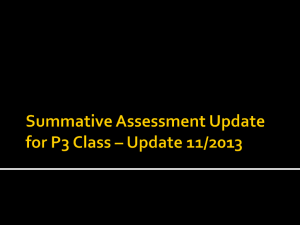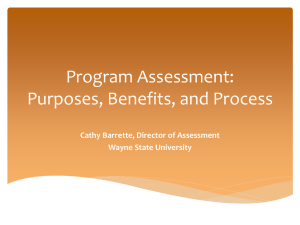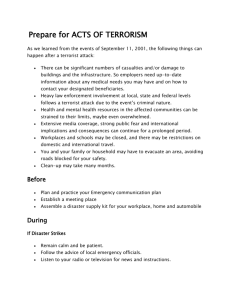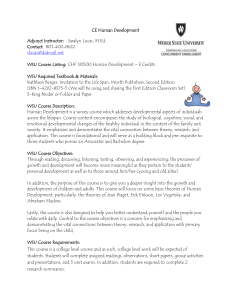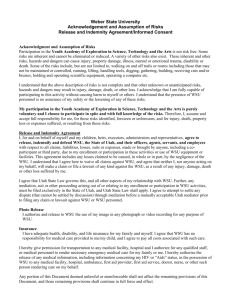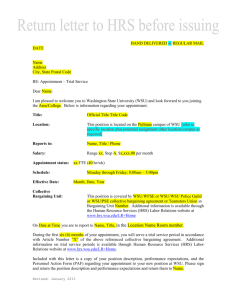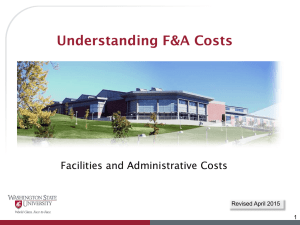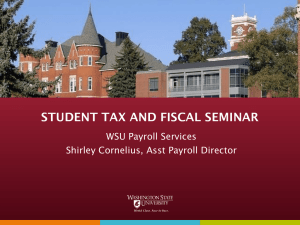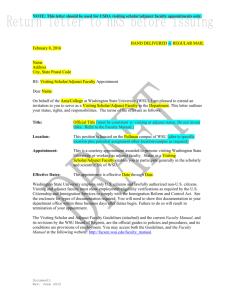Preparing a Proposal Budget
advertisement
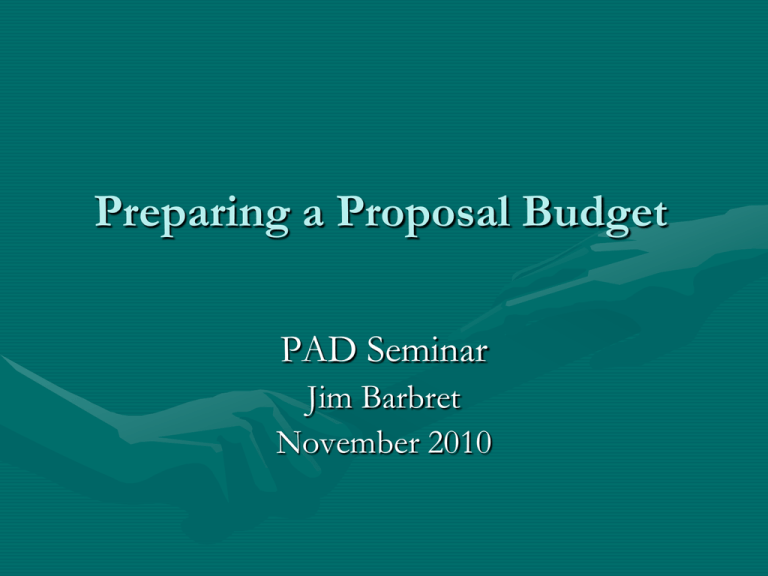
Preparing a Proposal Budget PAD Seminar Jim Barbret November 2010 Today’s Objectives/Agenda • Discuss principles around building a proposal budget • Provide some tips for the standard categories and “forgotten” costs • Discuss how and when cost sharing comes into play • What rules govern my proposal budget? • Demo WSU’s eProp application to develop the proposal budget Budget Building Principles A budget should • flow logically from the proposal's research and methodology plans with a breakdown of costs per year; • accurately fit the work to be conducted; an unrealistically lean or unduly inflated budget can count heavily against a favorable review; • be both an estimate and a firm offer on the part of the University. After an award has been made, renegotiation is difficult. Budget Building Principles • The proposal budget section has two components: a financial budget and budget justification. • The financial budget presents each line item or budget category • The justification explains why each item is necessary for the project. Budget Building Principles • Primary principle and driver – what do you need to complete the proposed work? • Build a budget based on this fact …. then apply appropriate constraints/guidelines • Remember – few Federal agencies define what is allowable and the one that does define doesn’t give grants! • So it is up to you to “make the case” for your costs Constructing a Budget Primary Categories • Personnel – the salary, wages and fringe benefits of the WSU staff working on the project • Consultants – the costs of key experts (nonWSU) that will provide advice/consultation • Equipment – what equipment must be procured for this project • Travel – what funds are needed to support the travel associated with the project Constructing a Budget • Subawards and Consortiums – will a portion of the work be awarded to a collaborator at a different institution or entity • Other – materials, supplies, publications, animals and related costs, tuition for supported graduate students, use of institutional cores or service centers • And, lastly, the Facilities and Administrative (indirect) costs The Personnel Section • Salary should be calculated according to proposed effort of the individual over the course of the budget period. • If there are significant fluctuations throughout the budget period, they can be identified • Otherwise, it is best to budget the effort based on the entire budget period, normally a year. • For nine-month employees, summer salary can be requested for the effort planned for the summer period. Personnel Section Include in the salary information: • the individual's name and project role; TBN’s are allowable for non-key personnel • percentage of time that will be spent on the project, • present WSU base salary; for summer pay of 9month staff, use 1/3 of academic salary, and • the amount to be charged to the grant. (a calculation of bullets 2 and 3) Personnel Section • Fringe benefits are applied for all staff • WSU uses a “composite rate” based on employee class • Rates are calculated and approved by DCA annually • There are currently 6-7 different rates, most sponsored programs use 3-4 unique rates • Rates can be found on the SPA website as well as applied in eProp Equipment • First question – does what I want to buy fit the classification of equipment? • A cost greater than $5,000 and a usable life greater than two years • The budget should list the specific equipment items and their estimated purchase • Shipping and installation should be budgeted. If installation involves substantial structural changes, these costs should be budgeted as renovations and alterations. Equipment There are two types of equipment: •General purpose equipment refers to items not limited to scientific or other technical use such as office equipment, office furnishings, computers, etc. •Specialized equipment can be used only for specialized scientific or technical purposes and is allowable if it is needed to conduct the project. The need should be fully explained in the budget justification. Equipment • General purpose equipment typically is used for multiple activities so it is inappropriate to charge its entire cost to a single project. If it is determined this type of equipment is required, the need should be fully explained in the budget justification. • Equipment usage fees are considered “Other Expenses” and should be captured in that section of the budget Travel • Travel is allowed if it directly benefits the project. Travel to research sites, sponsor meetings, or conferences. • When budgeting for travel, you should list the trip purpose, destination, and number of travelers as well as airfare, transportation, meals, lodging, and registration fees. • If your plan includes foreign travel, include countries to be visited along with considerable justification of the trip. Other Direct Costs • Materials and supplies encompass all consumable or disposable items. Included in this category are lab supplies, chemicals, etc. • Printing and publications costs associated with the dissemination of project results should be budgeted. Tuition for graduate students can be budgeted for when students are employed by the project. • For laboratory animal purchases, list the animal species and number required. Costs of caring for the animals should also be listed. Facilities & Administrative Costs • The F&A costs are expressed as a percentage of the direct costs of the project. • The appropriate rate and basis to be used is driven by two characteristics of the program. • First Characteristic - Is the project is conducted “on-campus” or “off-campus”? The driving factor here is where is the majority of the WSU costs incurred. • Second Characteristic – Is the activity to be undertaken: 1) Instruction, 2) Research, or, 3) Other Sponsored Activity Applying Constraints and Restrictions • Does the program have a “cap” on the direct costs? Revisit costs to get under the cap or, perhaps “right size the work” • Does the program have a cap on indirect costs? Apply the programs indirect cost rate. • Perhaps, we need to use cost sharing … Cost Sharing • Cost sharing (C/S) are real costs of the project for which WSU will not be reimbursed • Some programs require cost sharing or a “match” • The most common type of C/S is the effort of the PI or other key personnel • Second most common – the institution shares in the acquisition of a piece of equipment • If C/S is associated with a project, SPA will establish a second index to capture the costs Cost Sharing Myths • Does it really help your proposal? • If cost sharing is a requirement (mandatory), you must in order to be eligible • When it is “encouraged” (voluntary), be reasonable. Remember, it is a cost to the University and must be paid one way or another. • Any commitment made in the proposal for which reimbursement is not expected is cost sharing Who Makes the Rules • For Federal projects, OMB Circulars A-21 and A-110 are the driving costing principles – All Federal agencies prescribe/abide to these circulars … with their own nuance – Example – NSF salary policy • Circular A-21 does rely on institutional policy to establish specific guidelines • As part of WSU’s stewardship role, we interpret the principles to meet our specific rules The NIH Modular Budget • In the 90’s, NIH introduced the modular budget; it broke budgets into $25K modules • Along with “expanded authorities”, it said that they trust us to “do the right thing” • To develop a modular budget, you must define in the budget justification key personnel and their level of effort; any equipment you wish to purchase, and any subawardees you plan to use • It did not remove budget rules; at award time you must develop a category budget WSU’s eProp • eProp was implemented during the last year to process proposal across campus • One feature is a budget building tool • The application calculates fringe and indirect cost using institutional or program rates • Upon completion, proposal is routed to designated approvers for processing • On to a demo …
